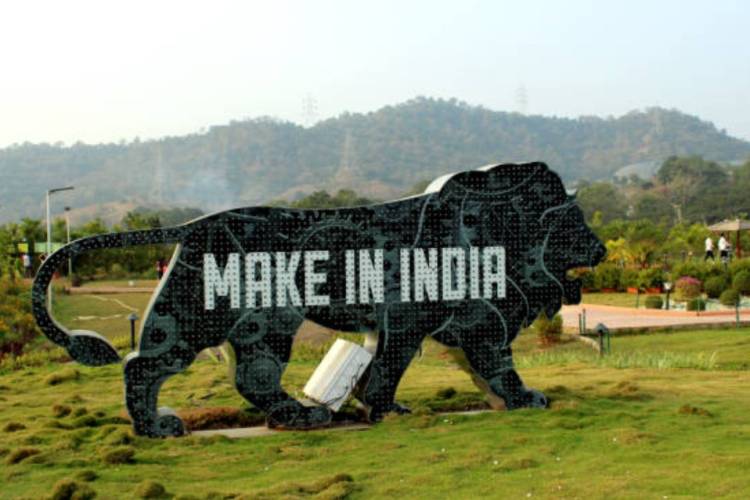India’s struggle for economic independence during colonial rule centred on the Swadeshi Movement, which urged a boycott of British goods and promoted indigenous industries. Led by Mahatma Gandhi and others, the campaign revived traditional sectors like textiles and instilled pride in Indian craftsmanship. A century later, the core tenets of Swadeshi — self-reliance and economic nationalism — have returned to the spotlight.
With the United States set to impose 25% tariffs on Indian goods starting August 7, the historical relevance of Swadeshi is hard to miss. The tariffs, aimed at narrowing the US trade deficit, target key Indian exports including pharmaceuticals, textiles, and IT services — sectors that depend heavily on the American market. Against this backdrop, India’s current self-reliance campaign, Atmanirbhar Bharat, finds renewed urgency.
READ | Repo rate cut key to reviving credit, easing MSME crisis
Swadeshi call and policy gaps
Prime Minister Narendra Modi has responded to the evolving global trade climate by invoking the Swadeshi spirit. He has urged citizens, traders, and business leaders to actively support indigenous products. Traders, in particular, have been asked to commit to stocking and selling only Indian-made goods. This appeal, though symbolic, aligns with the broader economic goal of import substitution and reduced dependence on volatile foreign markets.
But symbolic gestures must be matched with policy action. Exporters have called on the government to share the burden by fast-tracking the ₹2,250 crore Export Promotion Mission announced in the Union Budget for 2025–26. The delay in its rollout has heightened anxiety among firms preparing for the double blow of American tariffs and potential penalties related to India’s continued energy imports from Russia. Targeted export subsidies and easing credit access for MSMEs would be a logical next step.
Beyond self-reliance: Strategic diversification
India’s response cannot stop at Swadeshi. Experts have flagged the need for urgent trade diversification. Negotiations for bilateral trade agreements must be accelerated, especially with the US, to mitigate future shocks. India should also deepen commercial ties with ASEAN, the European Union, Africa, and Latin America.
However, this route is fraught with competitive and logistical hurdles. ASEAN economies like Vietnam and Indonesia enjoy lower US tariff rates — 20% and 19%, respectively — and offer faster regulatory processes and export infrastructure. Even with existing Free Trade Agreements, scaling up exports to new destinations demands aggressive marketing, regulatory coordination, and substantial investment in logistics and port capacity. In the short term, these adjustments will yield limited gains unless backed by robust government support.
The cost of retaliation
If the US tariffs proceed without resolution, India may be compelled to consider reciprocal duties. Likely targets include high-visibility American exports like aircraft, crude oil, whisky, and motorcycles. Retaliatory tariffs carry the risk of escalation, but they may be necessary to signal resolve and deter further coercive tactics.
At the same time, geopolitical considerations complicate matters. India may have to rebalance its oil imports towards the Middle East or the US and expand defence procurement from France and Israel—moves that raise costs and strain its traditionally close ties with Russia. Such shifts, if they materialise, will require deft diplomacy and financial recalibration.
Swadeshi’s promise and limits
A renewed focus on Swadeshi may offer partial relief. Domestic sectors like textiles and handicrafts, which employ millions, could benefit from growing local demand. The textile sector alone, a major export earner, may offset some export losses through expanded domestic consumption.
Yet, the scale of the US market cannot be matched by local demand. India exported $86.5 billion worth of goods to the US last year. In high-value sectors like pharmaceuticals, where India supplies half of America’s generic drug requirements, replacing lost market share at home is implausible. Shifting consumer behaviour also requires long-term behavioural nudges, marketing campaigns, and fiscal incentives—not short-term patriotism.
India’s constraints, America’s blind spot
India’s inflexibility in trade negotiations stems from legitimate economic and social priorities. The US has consistently overlooked India’s concerns — such as protecting agricultural livelihoods, safeguarding dairy interests, and ensuring energy affordability. The US benefits significantly from India’s openness in services and education sectors, yet offers little accommodation on India’s core demands.
Unlike close US allies like Japan and the EU, India is unlikely to offer zero-tariff concessions, especially given its pressing developmental needs and its emphasis on strategic autonomy. The government is unwilling to surrender ground on sensitive sectors, particularly under the shadow of external pressure.
India’s success in weathering this latest round of economic nationalism will depend on swift execution and diplomatic agility. While it is unlikely that the economic impact of US tariffs can be fully offset in the short term, a coherent, multi-pronged strategy — combining domestic manufacturing promotion, selective retaliation, trade diversification, and targeted export support — can limit the damage and signal India’s resilience.
India’s economic maturity will be tested. But if the country can blend its Swadeshi spirit with pragmatic policy, it will be better placed to navigate what promises to be a protracted phase of global trade friction.

